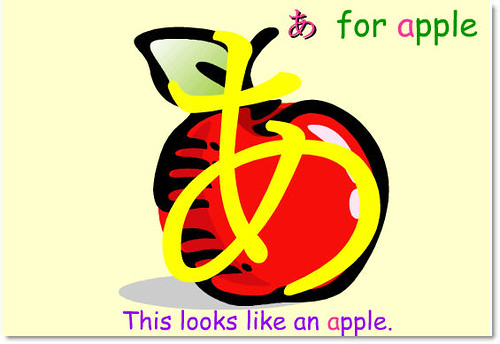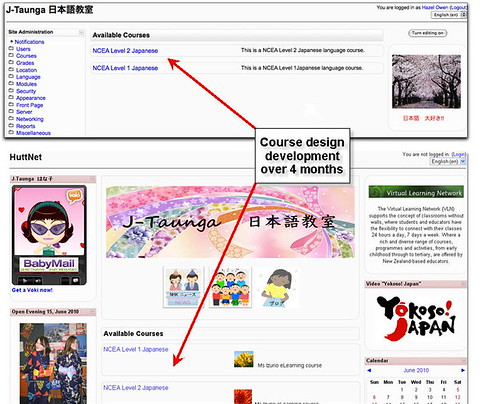Working together
We started by working together to refine Chitose's goals, partly by discussing the learning opportunities she was hoping to create for her students - a mix of content and communication potential (using a whole range of multimedia). The idea was that students would be encouraged to speak, write, listen to and read Japanese a lot more, with multimedia scaffolding helping with, for instance, pronunciation and the forming of kanji. Chitose had already created a large amount of resources in PowerPoint (see for example, the picture below), but was keen to enable students to be more active, and to build a learning community whose main interest was learning the Japanese language and finding out about Japanese culture, history, education and so on.
Some aspects of VPD
While working on some of the 'nuts and bolts' of design and build we found the screen share function in Skype to be invaluable with Chitose 'driving' and me talking her through things as she did them on her own computer. Also useful was the sandpit course that had been created in the VPD Moodle site to provide a safe place to try things out before going live with students. Chitose started with discussion forums and wikis (see the screen capture below), uploading files, and adding titles/labels, and of course adding users and assigning roles.
An example of a wiki in Chitose's Moodle site after being used by students
Making progress
Over the next couple of months Chitose put in a lot of effort to not only upskill in the workings of Moodle, but also took time to reflect on her own practice and collect feedback from her students. She also explored examples of effective practice and started to incorporate some of these ideas into how she facilitated and designed her sessions with students.How the students reacted: A time of great excitement
The moment that sticks in my mind is when, after the VPD face-to-face meeting in Wellington at the beginning of June 2010, I met with Chitose for a quick chat in Skype. Chitose had come back from the two days inspired and invigorated. She had already started incorporating a lot more multimedia in her Moodle, and was encouraging students to create and share their own. The look and feel of her courses was much more multi-dimensional, with something to cater for all learning preferences. Chitose was over the moon - she had facilitated a session with students the day before and was excited when she spoke about their level of engagement, level of enjoyment and apparent interest, with a lot of Japanese being produced while asking questions about concepts and places represented in the multimedia.
A comparison of the look and feel of Chitose's Moodle space after four months of being involved in the VPD project







No comments:
Post a Comment